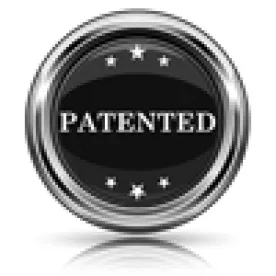Addressing the issue of standing, the Patent Trial and Appeal Board (PTAB or Board) denied institution of a covered business method (CBM) patent review, finding that the petitioner failed to show sufficient proof demonstrating that it satisfied the standing requirements for a CBM petitioner. Ocean Tomo, LLC v. PatentRatings, LLC, Case No. CBM2015-00157 (PTAB, Jan. 26, 2016) (Chen, APJ).
Ocean Tomo filed a petition for CBM patent review, challenging all claims of the patent owner’s patent relating to the probabilistic quantification of a degree of relevance between two citationally or contextually related patent documents. Following submission of a preliminary response by the patent owner, the Board permitted the petitioner to submit a reply to the preliminary response. The Board noted that the parties were intertwined in ongoing litigation arising from a business relationship between the patent owner and the petitioner having gone awry.
The petitioner and patent owner entered into a license agreement to which the patent owner would provide the petitioner with “certain proprietary computer generated metrics for determining the quality and relevance of patents.” The petitioner and patent owner disputed the business relationship in district court, in a case having 15 contract, tort and related causes of action. The petitioner’s district court complaint alleged that the patent owner used the petitioner’s information and solicited a potential customer of the petitioner’s after the patent owner’s senior executive, hired by the petitioner to be a managing director, resigned. The patent owner’s counterclaim alleged that the petitioner “created intolerable working conditions and severe conflicts of interest with the goal of forcing [the patent owner’s senior executive] to resign his employment.” The patent owner also alleged that the petitioner “routinely and systematically sold products” relating to the patent owner’s technology and “never reported or paid revenues to the Patent Owner,” including misappropriation of the patent owner’s confidential information.
Analyzing § 42.302, the Board found that the petitioner failed to show that it was either sued for infringement or charged with infringement at the time of filing the petition. The Board found no evidence that the patent owner sued the petitioner for patent infringement, concluding that none of the allegations raised in district court identified any patent infringement claims by the patent owner. The Board concluded that all of the causes of action arose from the contractual and tortious conduct, not from charges of patent infringement. The Board also concluded that the discovery requests in the related litigation did not place the petitioner in apprehension of being sued for patent infringement, finding that the challenged patent was not within the scope of the discovery requests. The Board finally concluded that the petition contained insufficient proof to support the assertion of standing, finding that the contractual and tortious conduct arising out of the business relationship between the patent owner and petitioner did not create a real and substantial controversy regarding patent infringement. For these reasons, the Board denied institution of the CBM patent review.



 />i
/>i

